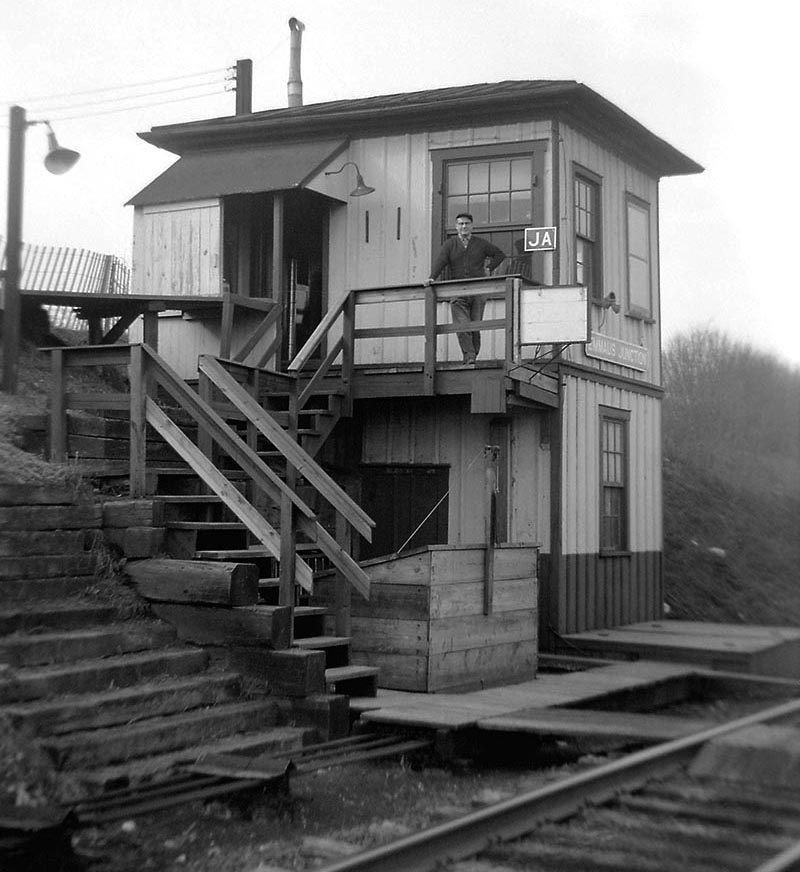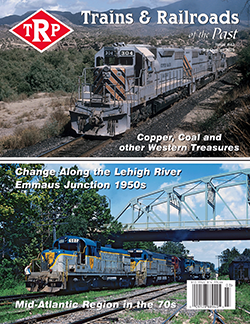 by Gale E. Treiber/photos by the author
by Gale E. Treiber/photos by the author
Although I had loved trains since I was three, it wasn’t until 1956 that I became a true railfan. My father, who worked for Socony-Vacuum Oil Company, had just been transferred from Pittsburgh to Allentown, Pa. I had grown up in the western part of the state – until the age of 13, anyway – with two railroads in my life. They were the Pennsylvania Railroad and the Pittsburgh & Lake Erie Railroad, both being used for our frequent trips from Pittsburgh to my mom and dad’s hometown of Beaver Falls, where most of our relatives lived.
Allentown was clear across the state, and the main railroads serving this area were the Lehigh Valley, the Central Railroad of New Jersey, and the Reading. The LV and CNJ ran north and east from Allentown and were located “downtown.” The main line (actually East Penn Branch) of the Reading from Allentown to Harrisburg, on the other hand, ran less than a mile away from our new house in Allentown’s western suburbs, and it soon became my favorite.
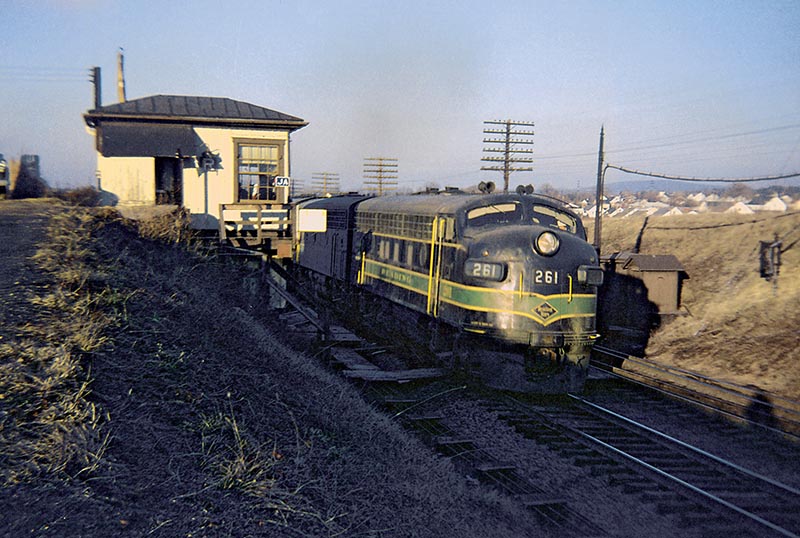
ABOVE: Here is symbol freight AL-3, led by F3A 261, running westward from Allentown to Lurgan, Maryland, where the train will be interchanged with the Western Maryland Railway (on paper). Reading and WM would operate the vast majority of their trains as run-throughs that cruised right through Lurgan on their way to Rutherford or Hagerstown, but all the official documents say the interchange is Lurgan… waybilled as “RDG LURGA WM,” even if the train went straight to Hagerstown.
Our suburban neighborhood was brand new, and since I was one of the oldest children there, I quickly became the paperboy for both the Allentown Evening Chronicle and the Sunday Philadelphia Bulletin – the latter paper route extending to our main access to downtown, which was Lehigh Street, that closely paralleled the Reading’s East Penn Branch through our area. There was a general store on Lehigh Street at the intersection with Oxford Drive, and one summer day in 1956, I chanced upon my first copy of Trains magazine – the August 1956 issue, which featured one of my favorite train stories of all time, “The Mohawk that Refused to Abdicate,” by David P. Morgan… and I was hooked. Several months later I took my first train photograph, one of the lead Baltimore & Ohio F3A that pulled the Philadelphia Bulletin’s paperboy special to Washington, D.C., for President Eisenhower’s second inauguration.
I had been inspired, and upon my return to Allentown, I decided that I was going to get a few photos of the Reading. From the foot of Oxford Drive, where it dead-ended at the Reading’s track, I could look westward and see not only signals, but also a switch tower in the far distance. On my next free Sunday afternoon, that tower would become my quest. The western part of Allentown, where it meets Salisbury Township, was quite rural back then. After leaving the little cluster of businesses at the foot of Oxford Drive, there were cornfields most of the way to the next town — Emmaus. I rode my bike down Lehigh Street, and eventually I found a small road that led toward the tracks. I turned my bike onto it and right before it got to the railroad, there was a dirt road heading east to the switch tower.
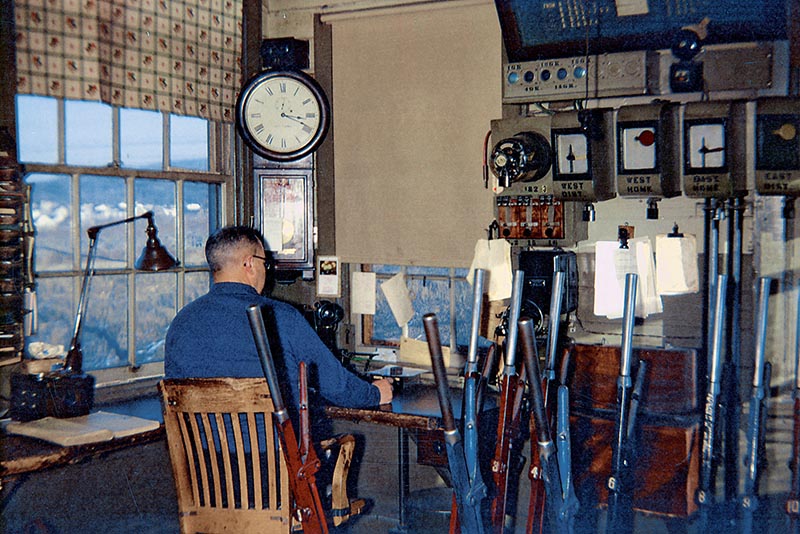
ABOVE: Mr. Gallagher at his desk in the tower. The levers for the switches, signals and their interlocking components are on the right. The indicators above them show that trains are approaching from both the east and the west.
I sat there for a while, hoping that a train would come by so that I could get a photo with the tower in the background. Soon, a car drove past towards the tower and the driver waved. After a few minutes another car that had originally been parked by the tower drove off, and as soon as it had passed, I saw the new operator, who had just come on duty, standing on the porch waving for me to come to the tower. He introduced himself as Mr. Ed Gallagher and invited me inside. Thus began a year-long Saturday or Sunday afternoon friendship that lasted until the Reading Company closed the tower at Emmaus Junction.
Over the next several months, I learned a lot about Mr. Gallagher’s early days. He had grown up in the nearby anthracite coal country. After his mandatory four years of primary school education, he left school, like so many of his friends, to work in a local coal mine to help support his family. He described his first job as a ten-year old, driving the mules that pulled wagons of coal deep under the ground. He hated it, and as soon as he turned sixteen, he talked his mother into signing his working papers and he went to work as a railroad man, joining the Reading Company — a decision he said that he never regretted. After some forty years with the railroad, he had enough seniority to bid on his current job, “second trick” at JA Tower (Emmaus Junction), working five days per week from 3:00 p.m. to 11:00 p.m.
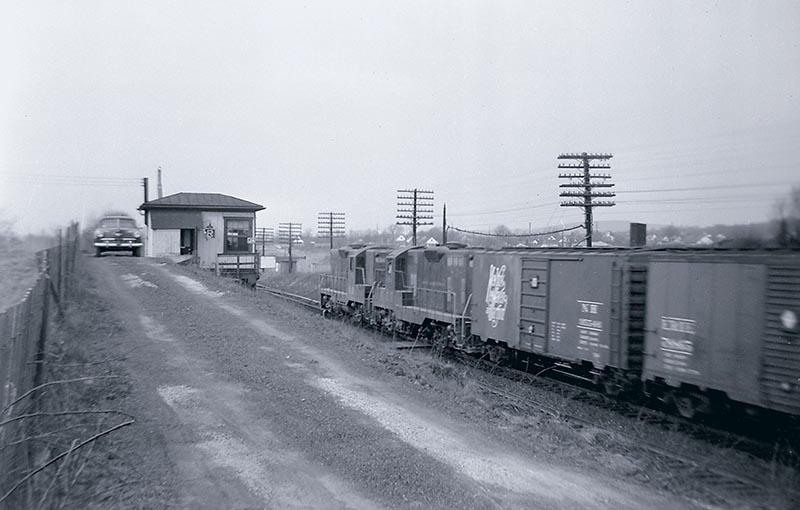
ABOVE: A pair of Reading GP7 units lead eastbound HB-4, running between Rutherford Yard in Harrisburg to Saucon Yard in Bethlehem, with traffic primarily bound for Bethlehem Steel.
Mr. Gallagher showed me around the upper floor of the tower— his “office.” It was a typical Reading interlocking tower… wooden framed, two-stories, with full-sized levers. The bottom floor was full of the lower parts of the levers, the rods to which they connected, relays and other interlocking and signal components. The principal function of JA Tower was to control the junction of the Perkiomen Branch with the East Penn Branch, the double-tracked main line between Allentown and Reading. The plant was rather simple, with a crossover between the westbound and the eastbound mains, followed by a third switch to the left for the 38.6 mile-long line south to Perkiomen Junction, which was on the Reading’s main line between Reading and Philadelphia.
In addition, there were home and distant signals on the main line and a signal that would allow northbound trains on the Perkiomen Branch to enter the East Penn Branch on their way to Allentown. In addition to the levers mentioned above, there was one more that still connected the tower to a train order signal for trains entering the Perkiomen Branch. I never saw that one used other than the time I asked Mr. Gallagher to lower it to the clear indication so that I could take a photo of it in its “lower quadrant” position…


